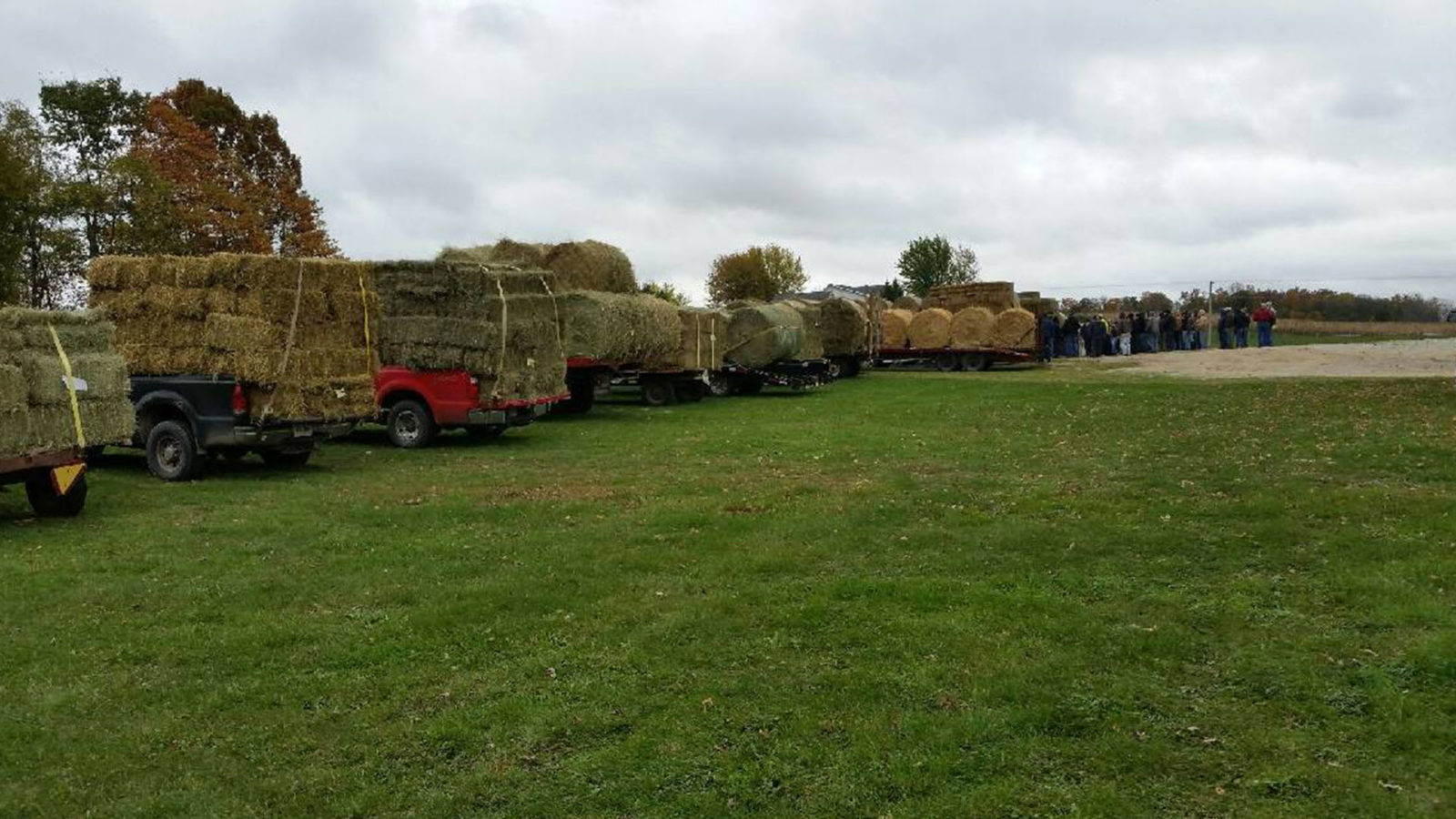We’ve had a cool, wet spring so far. In fact, this is what it looked like near the end of March. And though that snow has melted now, more rain is in the forecast. That means my fields are extremely saturated, so I am not able to get any field preparation done.

I cleaned up my equipment and got it ready to go after harvest last fall. It’s a waiting game for me.
I’m expecting my seed to be delivered soon and hoping to get fertilizer applied. Ideally, I normally start planting the last week of April. But I’m concerned that planting in 2020 may be too much like 2019, when everything needed to be done all at once because we had so much rain.
This year, I will plant soybeans in my fields that dry out first to maintain my crop rotation. Those fields will dry out sooner because of their lighter soil types. So for the first time, I will probably plant soybeans before I plant corn. Hopefully, that will boost my yields.
Once the fields are dry enough, I will apply fertilizer using GPS, spray residual herbicides to control weeds early in the season, and plant soybeans. Then for corn, the process will be pretty much the same as for soybeans. I am 100% no-till, so any tillage is eliminated, giving me additional precious time when I’m ready to put seed in the ground.
It’s been an interesting time to wait for the fields to dry out. Indiana is under a stay-at-home order during the current coronavirus outbreak. However, agriculture is considered an essential business, so some things are continuing with social distancing practices in place.

I also raise hay. Because of the livestock in my area, hay sales happen in different locations almost every day. Horses, cattle, sheep, and goats in the area still need to eat. Sale barns manage transactions between farmers like me who raise more hay than my cattle need and livestock farmers who need more hay than they can raise. Most of my hay sales go to a demographic of livestock farmers known as the Amish, a U.S. group with Swiss-German roots that eschews most technology, such as electricity and modern farm equipment.
Sales barns are doing an excellent job of enforcing social distancing. Buy or sell what you need and then move on. They have been limiting buyers in the auction houses and changing office protocol related to paperwork that accompanies those transactions.
In past years, I sold my highest-quality hay during the first three weeks of April, when the local market peaks and pays top dollar. But because other businesses are temporarily closed due to COVID-19, many buyers don’t have the cash they expected. So, our local hay market crashed at the beginning of April, because the workforce for northeast Indiana’s recreational vehicle industry, which includes many Amish, has been furloughed. I am still supplying hay to some direct customers, but I’ve had to extend them a grace period to pay.
The drop in local hay prices mimics the decreasing prices we are seeing for other commodities, including soybeans, corn, and beef, because of coronavirus. Although it’s discouraging to know the food demand is there but still see lower prices, that hasn’t affected my plans to plant soybeans and corn to follow my normal rotation this year.
While I’m waiting for fields to dry out, I’ve continued feeding the few cattle I have right now. I’ve also been cleaning up areas at the edges of my fields to reduce the chance of damaging my equipment and to improve the environment. For example, since I’m always working to improve my environmental footprint, I’ve cleaned up a flat area between a ditch and a county road along one of my fields, and I plan to plant wildflowers to create pollinator habitat there.

Oh – and I’ve been growing my quarantine beard and spending time with my two “employees.” They tolerate me, work cheap, and don’t complain.

